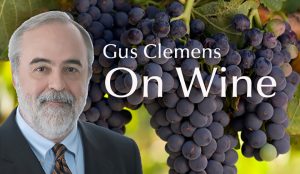For many folks New Years is sparkling wine time. Here’s a quick tour of the bubbly basics.
The bubbles come when carbon dioxide gas dissolved in the wine is released after you open and pour the wine. The bubbles get there in three basic ways.

Champagne and other bottle-fermented wines use a process of secondary fermentation in the bottle, now called méthode traditionnelle or “traditional method.” The process is more labor intensive, and thus typically is more expensive.
In the Charmat or tank process, the fermentation occurs in a large tank or autoclave. Prosecco and some other sparkling wines are made this way, and with less labor usually are less expensive than bottle fermentation. Typically they are more fruit-forward than bottle fermentation. Sparkling wine can only be called Prosecco if it was made in northeastern Italy.
Finally, you can inject carbon dioxide into still wine using a process similar to soda pop. These are the least expensive and the lowest quality sparklings.
Fun facts about sparkling:
• The region of Champagne ships more than 306 million bottles worldwide, some 22 million to the U.S.
• There are some 1.5 billion bottles of Champagne in current stock aging and maturing.
• Annual production of cava—the Spanish sparkling—is around 1.3 billion bottles.
• Annual production of Prosecco is some 450 million bottles.
• Germans drink the most sparkling wine, nearly one gallon per person each year.
• Sparkling wine should be served well chilled—40-45ºF.
Tasting notes:
• Anna de Codorníu Brut Rosé NV: Delicious pleasure at pleasurable price. Superb color; nice fruit expression; fun to sip. Cava. $13-15 Link to my review
• Sterling Vineyards Blanc de Blancs Sparkling Wine Napa Valley 2016: Nice bubbles. Clean, crisp, good acidity. Made using Charmat process. $25
Link to my review
• Mionetto Cuvée Anniversario Valdobbiadene Prosecco DOCG: Very light, delicately fruit forward, elegant, precise, versatile. $25-30 Link to my review
• Champagne Henriot Brut Souverain NV: Vibrant, fresh, superb choice as an aperitif. $43-50 Link to my review
• Bruno Paillard Rosé Première Cuvée Champagne NV: Stunning achievement in
Champagne purity; no gimmicks, just pure fruit with cutting acidity, balanced by tannin and discrete but vivid fruit. $61-80 Link to my review
• Moët & Chandon 2009 Grand Vintage Rosé Champagne: Powerful, acidic, very dry and significantly improves with some air time. Demands to pair with food. $70-80 Link to my review
Last round: My New Year’s resolution is to better conceal my bad choices in 2019.
